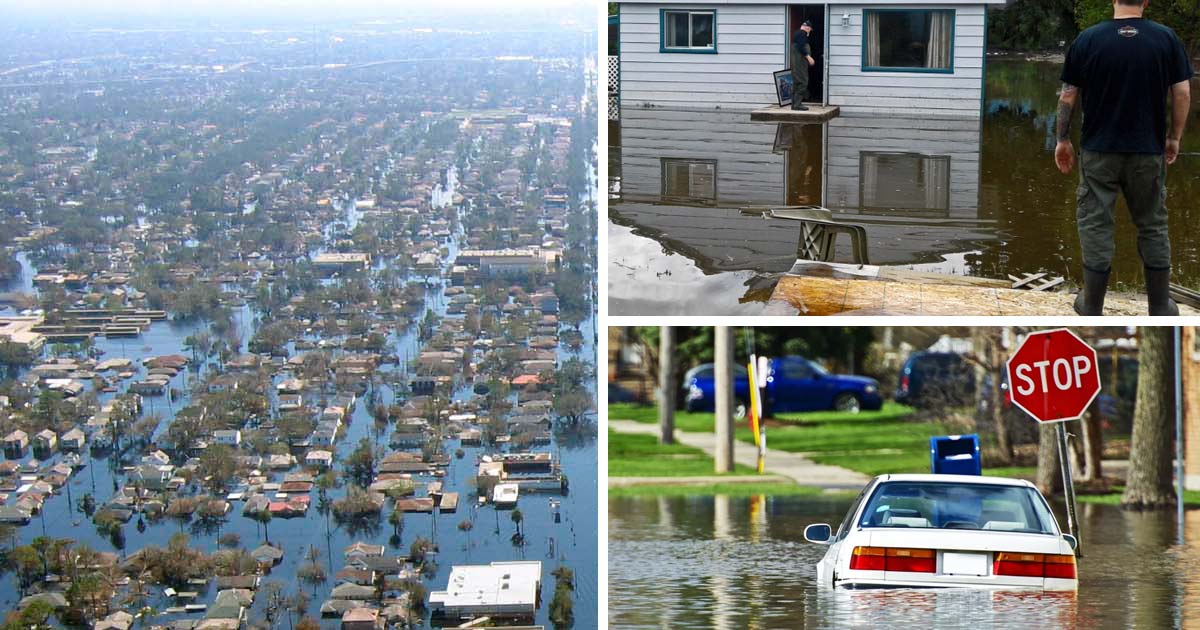Which States Are Most Vulnerable to Floods?

Flood insurance may not be among your top considerations. However, living in a state along the Gulf Coast or in a landlocked area prone to flooding increases the danger of costly damage. Just an inch of floodwater can cost up to $25,000 in expenditures.
Here’s why flood insurance is critical for citizens in the most at-risk states:
Texas
Texas tops the list, with floods along the coast and Flash Flood Alley in Central and North Texas. Almost every major city in the state is extremely vulnerable due to the numerous flooding hotspots.
The Texas Department of Insurance insures residences up to $250,000, and an additional policy can protect personal goods up to $100,000. Similar choices are available through the National Flood Insurance Program. However, there is a waiting time before these policies take effect, emphasizing the significance of responding before a storm hits.
New York
New York comes in second, with government flood insurance required for residents residing in high-risk areas.
As climate change exacerbates dangers, previously low-risk neighborhoods are reclassified as high-risk zones, resulting in higher statewide premiums. Purchase flood insurance today to ensure consistent premiums against future policy changes.
New Jersey
Unsurprisingly, New Jersey is vulnerable to floods in much the same way as its neighbor across the Hudson River. Both states were hit hard by Hurricane Sandy in 2012, and insurance claims from the disaster are still being filed.
Approximately 17% of New Jersey is in high-risk flood zones, subject to boundary and premium changes. Securing insurance today allows you to lock in favorable prices before they change.
Louisiana
Louisiana’s inclusion on this list is unsurprising, given the long-term impact of Hurricane Katrina and following record weather disasters such as the 2016 flooding.
While flood insurance is not required by law, living in a high-risk location can prevent you from getting a federally backed mortgage. Furthermore, around 25% of flood insurance claims come outside of high-risk zones.
Florida
Despite Florida’s significant flood danger, only 18% of homes carried flood insurance in 2022. While premiums may be high, the potential losses, as seen with Hurricane Ian, outweigh the expenses.
California
Historic floods, such as the 1892 Great Flood, highlight California’s vulnerability to flooding. Recent incidents, such as the 2017 Oroville Dam spillway accident, demonstrate the critical necessity for flood insurance.
According to reports, addressing aged infrastructure will require a $34 billion investment, stressing the importance of insurance coverage.
Mississippi
Mississippi’s history of flooding has resulted in considerable NFIP payouts since 1978, making flood insurance a wise investment.
Pennsylvania
Pennsylvania’s position on this list, despite its lack of shoreline access, stems from its proximity to flood-prone states such as New Jersey and New York.
Flood insurance is now required for many residents due to policy changes resulting from flood map upgrades.
Alabama
Natural disasters such as Hurricanes Katrina, Rita, and Ivan highlight Alabama’s vulnerabilities. Flooding occurs frequently and requires adequate insurance coverage.
Missouri
Missouri rounds out the top ten, despite being double-landlocked. Flood insurance is required for flash floods and flood-prone populations.
Cost Considerations:
Flood insurance premiums vary by state, depending on factors such as geography, home characteristics, and coverage. Consulting with an insurance professional can result in customized estimates.
Floods Can Strike Anywhere
Even states with reduced flood risk are not immune, with 40% of NFIP claims originating outside of high-risk areas. Given the surge in extreme weather events, it is wise to plan for floods regardless of location.

Associate Writer • Environmental Technology and Sustainability Writer
Sophia writes articles on innovations in green technology, including ca energy, sustainable materials, and explores how technology can address environmental challenges and promote sustainability.

